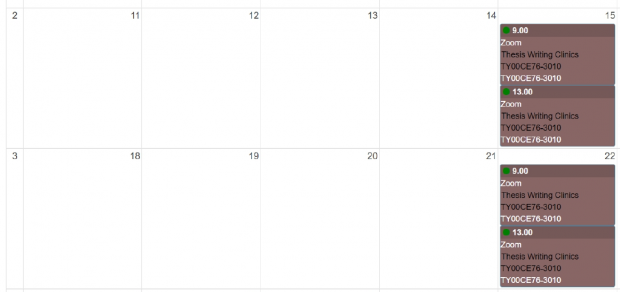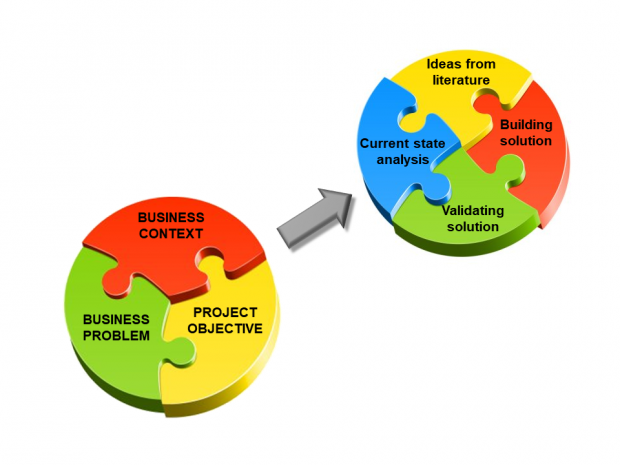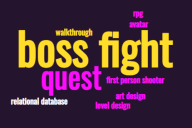The main aim of this blog series was to share my observations and learnings with instructors interested in adopting scientifically sound, systematic and holistic research and business principles – that produce quality results – into their pedagogical toolbox.
The last text in this 3-part series of texts focuses on the benefits of one of the key components for producing the thesis in Metropolia Industrial Management (IM) Master’s Program, namely the Writing Clinics. This text explains in detail the concept of the Writing Clinics centered on one-on-one guidance and on the use of the IM Thesis template.
The first text dealt with the benefits of the overall IM Master’s degree program design. The second text covered the specific benefits of the GATE model utilized for producing the thesis.
The whole program has been built and developed over the years according to Metropolia curriculum and using action research principles (see e.g. Kananen 2013, Saunders et al. 2016) to include the most effective elements from the perspectives of all stakeholders. One such element is the Writing Clinics using the IM Thesis template as a tool. Both are explained below, Writing Clinics first.
Why writing clinics?
The concept of Writing Clinics is very simple, but efficient. The main idea is for the students to produce text and remain productive during the entire writing process. The clinics consist of:
- Place: Computer lab (currently Zoom)
- Time: 12 days once/week in the spring term (Image 1 below)
- Instruction: Instructor briefings
- Activity: Students producing text for thesis GATE by GATE
- Reporting tool: IM Thesis template
- Instructor support: one-on-one language and thesis process guidance
- Instructor feedback
As far as we know, the concept of Writing Clinics is rather unique to the Metropolia IM Master’s program. Including Writing Clinics in the overall program design is based on recognizing the needs of students, who are typically working full-time during their Master’s studies, for a scheduled time slot in their busy calendars and also the possibility for personal guidance (on needs analysis, see Huhta 2008).

Image 1. Schedule for January in 2021 (Weeks 2 and 3)
Image 1 depicts the schedule for the first two study weeks of January. The Writing Clinics continue until the end of April in the same way, amounting to a total of 12 full days. Naturally, the students write their theses in their own time, as well. It is not obligatory to attend the clinics, but most students opt to do so. The biggest benefit of the Writing Clinics is that the students are likely to be more productive each week than if left completely to their own devices. Based on the feedback we collect from the students each year, there is a real need for the clinics and they appreciate this opportunity.
The text submissions take place through the course workspace after each GATE and the students receive feedback on the structure, logic and language of their texts. The level of feedback is more detailed in the beginning in order to benefit the students later with the rest of the text.
All online enthusiasts will be happy to know that Zoom is performing surprisingly well for organizing the clinics and in some ways even better than classroom settings. For instance, the breakout room feature is perfect for discussing with individual students without disturbing anyone else.
In the Writing Clinics, the IM Thesis template is a central tool.
Why thesis template?
In higher education, universities typically provide a school specific thesis template for their students. Metropolia UAS is no exception. In general, the idea of the thesis template is to ensure students produce well-structured, uniform reports that follow the academic requirements and specifications of the university and degree program in question. Often, the templates specify the required layout and formatting, but not much else.
The IM Master’s program has developed the idea of the thesis template further and made it quite detailed with section-by-section instructions as to general content, structure, logic and even academic reporting English practices.
This is done for two main reasons:
- The GATE model teaching on how to approach the practical business development projects the students carry out in their thesis follows a certain structure and logic described in text 2 and that very same logic should be visible in the report, as well.
- By following the detailed and quite informative template, the students will not have to waste time on reinventing the wheel again and again, but may concentrate on producing insightful text that is relevant and purposeful in terms of the business challenge they have set out to tackle.
Accordingly, the IM Thesis template matches the teaching by the IM team and provides the students with a framework that allows plenty of room for the students’ personal and professional insights. An example of one part of the template is the quite detailed – but still suggestive only – Table of Contents, which is available here as a PDF. It is not meant to be followed slavishly, but to be applied and personalized according to each specific topic and type of project.
The benefit of using the rather detailed thesis template is that it reinforces the GATE model teaching on how to carry out a business development project in a well-structured, logical way. By using the template, the IM Master’s students learn the following logic and the importance of triangulated data collection:
- Scoping the project for business context and objective
- Making a project plan for research stages and data collection
- Carrying out a Current State Analysis (CSA) to find out what the problem/s is/are
(Data 1, often interviews with people closely involved in in the day-to-day operations regarding the challenge specified in the thesis) - Researching best practice to find ideas on how to tackle the problems revealed by the CSA
- Building an initial solution based on the specific problems identified through the CSA and the ideas revealed by the literature research on how to tackle them
(Data 2, often workshops with team leaders involving co-creation of the initial solution for the challenge) - Validating the initial solution
(Data 3, often by presenting the initial solution to decision makers in the case company and getting feedback for making any final modifications) and then presenting the final solution - Presenting managerial implications through recommendations or, for instance, next steps
For two recent IM Master’s theses following this logic, see Recommendations to Improve the Product Management Process of the Case Company by Palenius (2020) and Recommendations for Improving the Complaint Management Process of a Biotech Case Company by Teye (2020).
It’s clear that we evaluate the students mainly on what we have taught them. Therefore the evaluation criteria (enclosed as a PDF) matches the above and includes for instance:
- Clarity
- Logic
- Research skills
- Grounding
- Fit between the different thesis sections +
- Practical relevance and value added = student insight
The benefits from the Writing Clinics and the thesis template, particularly for the students, if followed as intended, are thus:
- Time specifically reserved for writing = Productivity
- One-on-one immediate support = No time spent on being stuck = Efficiency
- Detailed instructions = Thesis according to requirements = Excellent thesis
Practicing what we preach
To use IM language, the ambitious objective of the integrated IM instructor team has been, from the very beginning, to provide the students with a program that uses the most suitable research and business methods and tools to ensure the very best final pedagogical outcome. For the IM team, the expected final outcome is a group of IM Master’s of Engineering graduates who have gained systematic problem solving skills for life and who have produced an IM Master’s thesis they can be proud of and which is intended to further their careers. The UAS Master’s degree meets the European EQF-7 criteria and equals science university Master’s degrees (Opetushallitus/Finnish National Agency for Education 2020).
To ensure this kind of program, all of its parts have been carefully designed to feed on each other, and therefore the GATE model teaching is complemented by one-on-one Research Clinics and implemented in practice in the Writing Clinics by utilizing the IM Thesis template to help produce the thesis. This model is highly applicable to other disciplines, as well.
I have not discussed Research Clinics in any of my blog texts as I am not personally involved in them. They are, however, an integral part of the program. This is where the students meet one-on-one with their designated thesis instructor, practically speaking as many times as they wish, to discuss the ins and outs of their thesis for content, structure, logic and business insights. According to student feedback, these meetings with the thesis instructors are the salt of the thesis process.
To finish off this blog series, I would like to leave you with the following thought from one member of the IM team, Dr James Collins, on the role of the IM team:
Even though the students’ business projects are highly practical, our job is to underline the importance of engaging our students in evidence-based research as opposed to “shooting from the hip”.
Evidence-based research is achieved by guiding the students through the process by providing them with the structure, methods and tools they need to perform in the intended way. If this kind of degree program design described in the three texts sounds like something that could be used in your context, can you perhaps see yourself improving on it?
References
Finnish National Agency for Education.( 2020). Qualifications frameworks | Finnish National Agency for Education.
Huhta, M. (2010). Language and Communication for Professional Purposes: Needs Analysis Methods in Industry and Business and their Yield to Stakeholders. Department of Industrial Engineering and Management. Helsinki University of Technology.
Kananen, J. (2013). Design research (applied action research) as thesis research: A practical guide for thesis research. Jyväskylä: Jyväskylän ammattikorkeakoulu.
Metropolia. (2018). Master’s Degree Programme in Industrial Management – Curricula.
Opetushallitus. (2020). Tutkintojen viitekehykset.
Palenius, J. (2020). Master’s Thesis. Recommendations to Improve the Product Management Process of the Case Company. (Theseus)
Saunders, M., Lewis, P. & Thornhill, A. (2016). Research methods for business students. 7th ed. Harlow: Pearson Education.
Teye, M. (2020). Master’s Thesis. Recommendations for Improving the Complaint Management Process of a Biotech Case Company. (Theseus)









Ei kommentteja